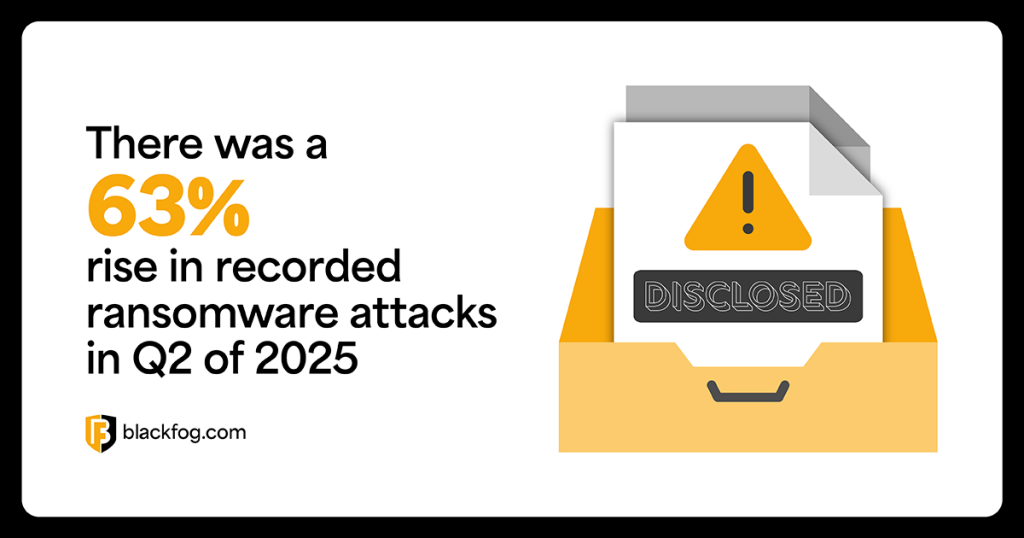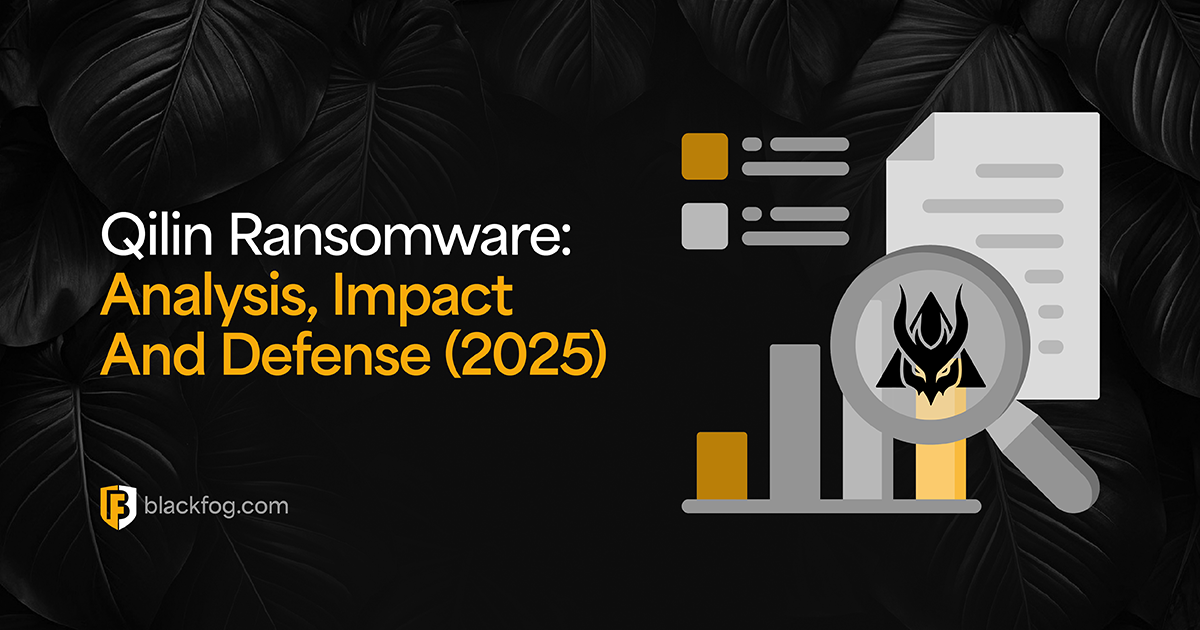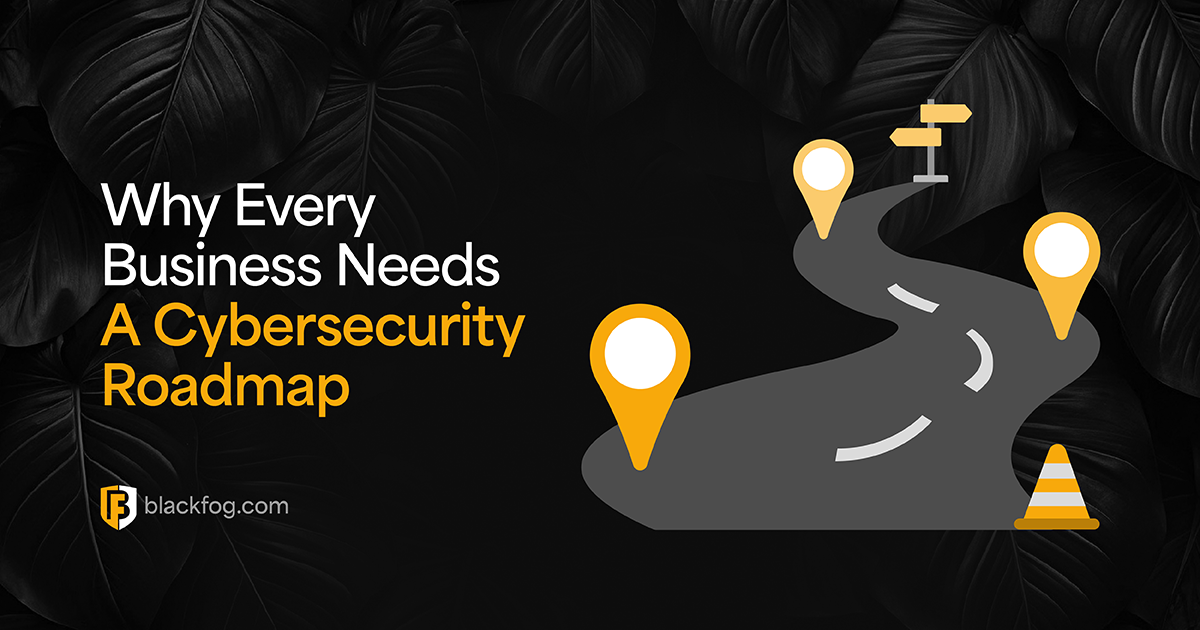
5 Key Challenges When Adopting AI and Machine Learning in Cybersecurity
AI and machine learning (ML) are rapidly becoming cornerstones of modern cybersecurity strategies. These innovations promise improved speed, scalability and accuracy in everything from threat detection to incident response. But making this a reality is far from simple.
Many organizations encounter roadblocks as they move from pilot projects to full-scale deployment. Issues related to data quality, system integration and skills gaps can all undermine even the most well-funded initiatives. Therefore, understanding these barriers early and how to tackle them is essential for security leaders aiming to build AI and machine learning-driven capabilities that are not only effective, but sustainable and trusted.
The Need for AI and ML in Cybersecurity

Ransomware attacks are increasing not just in volume but in complexity. BlackFog data shows a 63 percent rise in publicly recorded ransomware incidents in Q2 2025 alone. This marked the largest quarterly increase since tracking began. Yet this likely reflects only a fraction of the problem, as over 80 percent of attacks go unreported, while data exfiltration now features in nearly every targeted breach.
These tactics are increasingly designed to evade traditional perimeter and signature-based defenses. The use of automation, obfuscation and fileless malware all help hackers slip past static detection systems. However, spotting these techniques is where machine learning excels.
By continuously analyzing behavioral patterns across users, devices and networks, ML can detect anomalies, identify zero-day threats and trigger real-time responses. Unlike rule-based tools, ML systems adapt as threats evolve, helping organizations stay ahead of attackers. As a result, these technologies are becoming essential components of the modern cybersecurity stack.
5 Key Challenges When Adopting AI and ML
While the benefits of AI and machine learning in cybersecurity are well established, actually implementing them is rarely straightforward. These technologies are not plug-and-play solutions. They require the right data, infrastructure, expertise and strategy to be effective.
Without careful planning, such tools may give poor returns on investment due to underperformance or misaligned expectations. In some cases, they may even introduce new vulnerabilities such as exposing AI and LLM systems to new types of cyberattack.
The following challenges are among the most common roadblocks organizations face when moving from proof of concept to production-ready machine learning systems.
Data Quality and Accessibility
Machine learning systems are only as effective as the data they are trained and operated on. These tools rely on vast volumes of clean, structured and timely data to detect anomalies and learn threat patterns accurately. However, many organizations still manage cybersecurity data in silos that limit visibility and model performance. Poor data hygiene or incomplete logs can result in missed threats or false positives.
However, feeding large amounts of highly-confidential data into these systems can also create its own issues, giving hackers potentially more attack surfaces to focus on. To address this, businesses must prioritize secure, centralized data pipelines, enforce consistent tagging and apply strict access controls, especially when working with sensitive or regulated information.
Integration with Legacy Systems
Many organizations still rely on legacy infrastructure that has been in use for years – or even decades – and was not built to support the demands of modern AI and machine learning tools. These older systems may lack the flexibility, processing power or interoperability needed to support real-time analytics and automation.
This challenge is often underestimated during project planning, leading to delays or incomplete implementations. To overcome it, businesses should assess infrastructure readiness early, prioritize the use of open architecture and APIs, and ensure any new tools can communicate seamlessly with existing security platforms and workflows.
Lack of Skilled Talent
Demand for data science and AI specialists in cybersecurity continues to outpace supply. In the US, for example, federal data suggests there are only enough cybersecurity pros to fill 74 percent of roles, leaving a sizable talent gap. This in turn has a direct impact on performance – according to IBM, firms that lack trained staff can expect to see the cost of a data breach increase by $1.76 million.
While many businesses may hope that AI itself can help alleviate such shortages by taking on more tedious and manual work with automated tools, firms still need human skills to implement it in the first place. To ensure they have access to top talent, organizations should modernize hiring practices, expand hybrid or remote roles and invest in upskilling existing employees.
Model Transparency and Trust
AI and machine learning models are powerful, but they are not always predictable. In many cases, even the teams that build them cannot fully explain how a model reaches its decisions. This lack of transparency can lead to mistrust, particularly when an unexpected or incorrect result affects security posture or triggers automated actions. What’s more, it can leave systems exposed to manipulation through techniques like data poisoning.
For cybersecurity teams, this makes close monitoring of outputs essential. Organizations must prioritize explainability by selecting models and tools that offer clear logic in their decision-making. Layers of human oversight and clear accountability protocols are also critical to ensuring trust and reliability in AI-driven systems.
Cost and Resource Demands
Building and deploying effective machine learning solutions requires more than just the right software – it represents a significant investment of time, budget and internal resources. Beyond the cost of the technology itself, organizations must also account for the need to train staff, improve data infrastructure and continuously maintain and refine models.
These requirements can be a barrier, especially for smaller teams with limited capacity. However, with AI-driven attacks becoming more advanced and harder to detect, businesses will increasingly find they have no choice but to upgrade their defenses. In the long term, these investments are essential for staying secure and competitive. Turning to expert providers and tools with integrated AI solutions is also useful in making smart solutions accessible to the businesses that need them.
Share This Story, Choose Your Platform!
Related Posts
New Matrix Push C2 Abuses Push Notifications to Deliver Malware
Investigating Matrix Push C2, a browser based command and control system that uses push notifications to deliver malware, run phishing campaigns, and steal data across platforms.
Clop’s New Extortion Wave Hits Oracle E-Business Suite
Clop exploited an Oracle E-Business Suite zero-day to steal data from major organizations. Here’s how it happened and what it means for supply-chain security.
Qilin Ransomware: Analysis, Impact and Defense (2025)
In-depth 2025 Qilin ransomware analysis covering its rise, attack chain, intimidation tactics, double extortion model, and defense strategies.
Kerberoasting Attack Explained: Example And Prevention Guide
Kerberoasting attack explained with examples, detection tips, and prevention steps. Learn how to secure Active Directory from credential theft.
BlackFog Appoints Former Yahoo CFO Kenneth A. Goldman To Board Of Advisors
Kenneth A. Goldman joins BlackFog’s Board of Advisors, bringing decades of tech and finance leadership to accelerate enterprise growth and AI-based data protection.
Why Every Business Needs A Cybersecurity Roadmap
Find out what's involved in creating a cybersecurity roadmap and how having one can help navigate an extremely challenging threat landscape.






